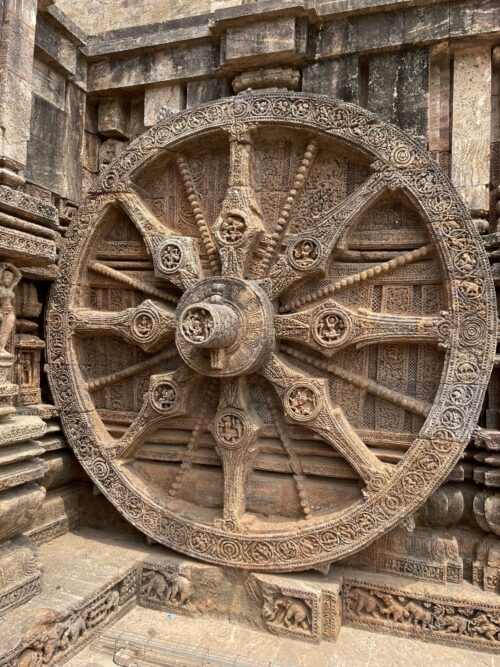Odisha Travel Guide: Explore the best of Odisha Tourism, including temples, beaches, and the stunning Chilika Lake. This guide will walk you through the historic landmarks such as Jagannath Temple in Puri, Konark Sun Temple, and more.”
India’s Best Kept Secret: A Journey of Discovery: In 2020, during our 9000 KM road trip across India, we crossed Odisha and encountered a line that resonated deeply with us: Odisha – India’s Best Kept Secret. At the time, we couldn’t explore the state as much as we wanted, since almost everything was closed due to the COVID restrictions. But, deep in our hearts, we knew Odisha was a destination we had to revisit.
Odisha is known for its rich cultural heritage, and a trip to Odisha is incomplete without visiting iconic temples like Jagannath Temple in Puri. The Odisha Tourism circuit includes historic sites such as the Konark Sun Temple and Udaygiri and Khandagiri Caves, making it a must-visit destination for history lovers.”
Odisha has always intrigued us with its spiritual and cultural allure. From the revered darshan of Shri Jagannath Prabhu at Puri to the architectural magnificence of the Konark Sun Temple, Odisha holds treasures that are often hidden from the usual tourist trail. The grandeur of the state’s history, its rich temple culture, and the natural beauty of Chilika Lake – the largest brackish water lagoon in India – were calling us.
Odisha – A State of Spirituality, Beauty, and History
As we planned our trip back to Odisha, the desire to witness these historical and sacred sites grew stronger. We had a deep yearning to explore the state’s vast cultural heritage, its timeless temples, serene beaches, and the unique coastal charm.
Odisha is a land where mythology and history come alive, with each temple, monument, and even lake telling a story of its own. It’s the state that houses some of the most iconic structures of ancient India, from the UNESCO-listed Konark Sun Temple to the magnificent Puri Jagannath Temple, the historical Udaygiri and Khandagiri caves, and the peaceful Dhauli Peace Pagoda.
The beauty of Odisha lies not just in its cultural gems but also in its natural landscapes – the stunning beaches like Chandrabhaga, the sacred Chilika Lake, and the beautiful coastline. This blend of spirituality, history, and natural beauty makes Odisha a must-visit destination for any traveler seeking a true connection to India’s heritage.
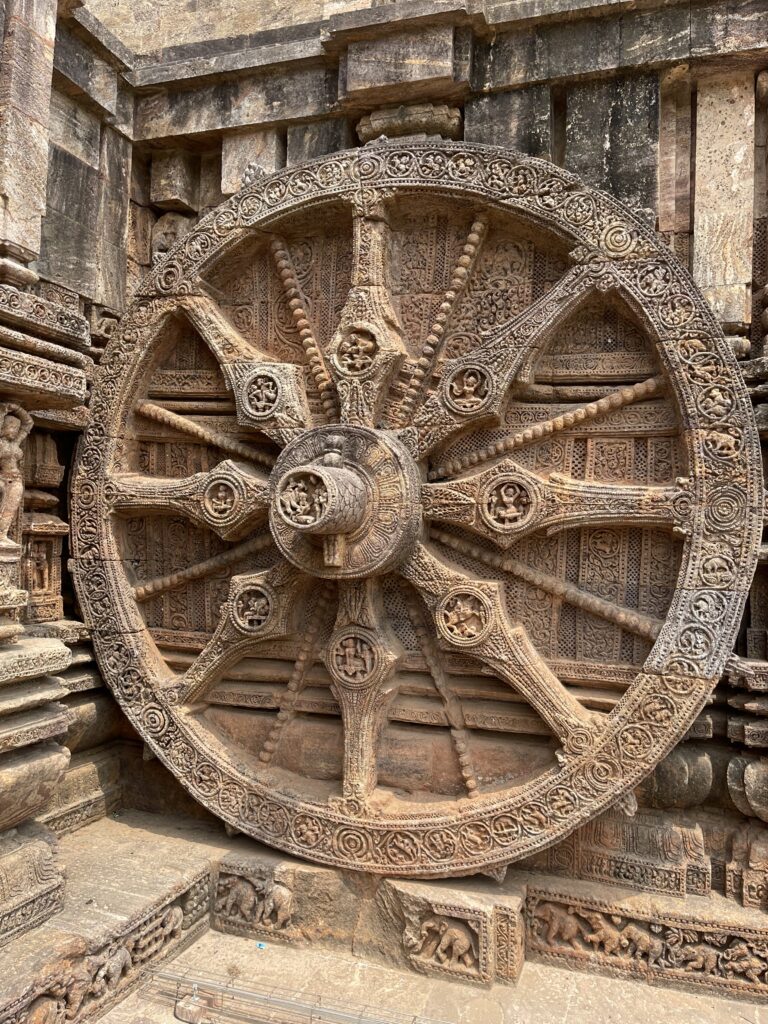
Last week, we finally got the chance to explore Odisha and fulfill the dream we had nurtured since our road trip across India. Starting our journey from Chennai, we made a halt at Vijayawada, where we enjoyed the beautiful landscapes of the East Coast of India. The next day, we reached the vibrant city of Bhubaneswar, the capital of Odisha, after an unforgettable journey along the eastern coastline.
In Bhubaneswar, we dived into the rich history and culture of the region. Our first stop was the majestic Lingaraj Temple, a 1100-year-old architectural marvel dedicated to Lord Shiva. The temple’s intricate carvings and towering spires made it a true testament to the craftsmanship of ancient Odisha. The spiritual energy of the temple was palpable, offering us a serene and reflective experience.
Next, we visited the Mukteshwar Temple, known for its beautiful and intricate architecture, often referred to as the “jewel of Orissa temples.” The temple’s stunning design and the peace it exudes made it a place worth visiting for every temple enthusiast.
A visit to the Dhauli Peace Pagoda was also on our list. Situated on the banks of the Daya River, it is believed to be the site of Emperor Ashoka’s Kalinga War, which marked his transformation towards Buddhism. The pagoda is a symbol of peace and offers panoramic views of the surroundings, making it an ideal spot for reflection.
We also explored the Udaygiri and Khandagiri Caves, ancient rock-cut caves that were once home to Jain monks. These caves, with their fascinating inscriptions and sculptures, showcase the region’s rich history and religious diversity. Walking through these caves was like taking a journey back in time, and it gave us a deep appreciation for Odisha’s ancient heritage.
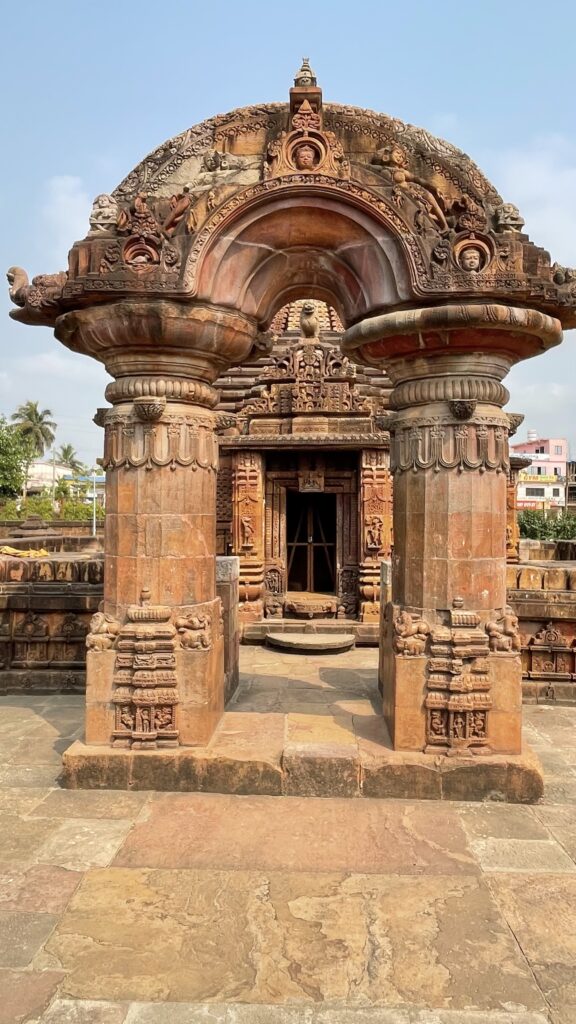
The next day of our journey took us to Puri, where we had the divine opportunity to have a darshan of Shri Jagannath Prabhu at the famous Puri Jagannath Temple. This temple, one of the Char Dham pilgrimage sites, is deeply revered by devotees from all over the world. The experience of offering prayers to Jagannath Prabhu in this grand temple was nothing short of spiritual. The energy and devotion in the air left a lasting impression on us, reinforcing the spiritual significance of Odisha.
After the soulful visit to the temple, we continued our exploration to the Konark Sun Temple, an architectural wonder and UNESCO World Heritage Site. We were fortunate to have a guided tour that helped us understand the fascinating history and the intricate details of the temple. The temple, dedicated to the Sun God, is known for its stunning Kalinga architecture, featuring intricately carved stone wheels, sculptures, and massive stone chariot structures. As we walked around the temple, we marveled at the genius of ancient Indian architecture and the spiritual significance behind every carving.
Following our visit to Konark, we drove along the scenic Marine Drive, which offered picturesque views of the coastline. The drive along the Bay of Bengal was calming, with the gentle breeze and serene views creating a perfect backdrop for our journey. Our final stop for the day was Chandrabhaga Beach, where we relaxed by the shore, soaking in the natural beauty of Odisha’s coastline. The tranquil beach, with its golden sands and clear waters, provided a peaceful end to our day.
Our time in Puri and Konark was an unforgettable chapter in our exploration of Odisha. The spiritual darshan at Jagannath Temple, the mesmerizing history of the Konark Sun Temple, and the peaceful moments at Chandrabhaga Beach all added unique memories to our journey. Odisha’s deep cultural and spiritual heritage, combined with its natural beauty, made it a place that we will cherish forever.
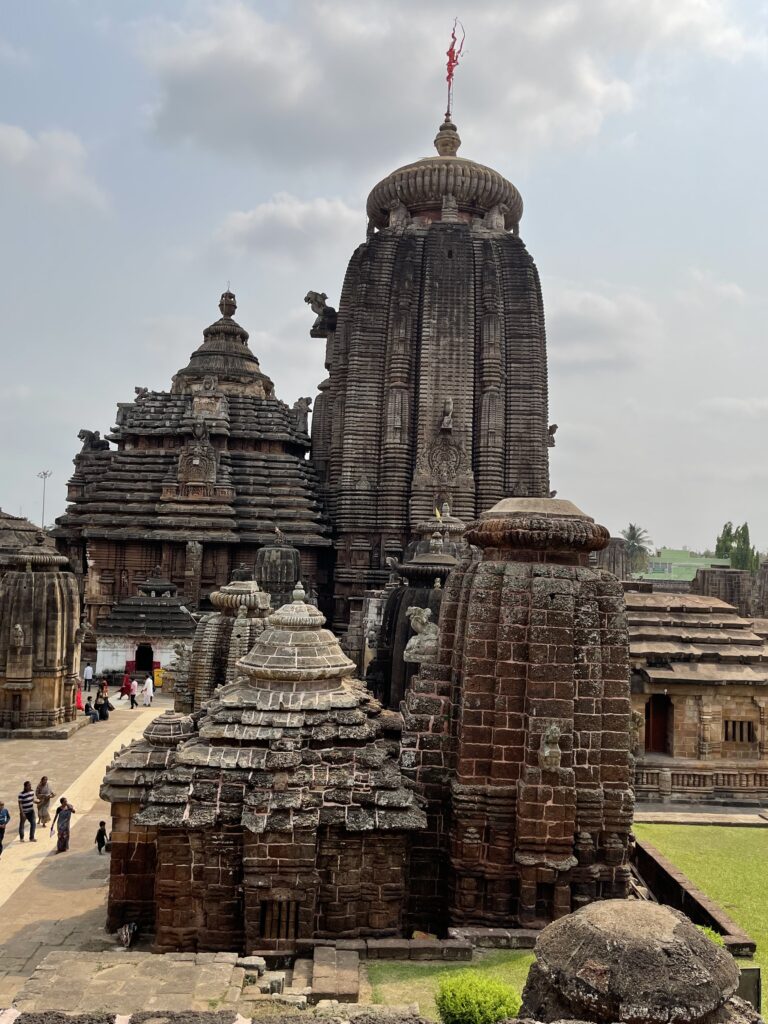
Exploring the Ancient Udaygiri and Khandagiri Caves
For history enthusiasts, Udaygiri and Khandagiri Caves are must-visit destinations in Odisha. These ancient caves, carved into the hills, offer a fascinating glimpse into the rich history and culture of the region.
Located near Bhubaneswar, the caves were originally built for Jain monks who used to mediate in isolation, away from public life. The Udaygiri Caves (meaning “Sunrise Hill”) and Khandagiri Caves (meaning “Broken Hill”) date back to the 2nd century BCE and serve as important reminders of India’s religious and architectural heritage.
What makes these caves so captivating is the intricate carvings and inscriptions that adorn their walls, many of which tell stories from Jain mythology. These caves were cut into the rock face, and their design reflects a unique blend of art, religion, and architecture. The caves served as living quarters for the monks, with some containing elaborate chambers, meditation halls, and small sanctuaries.
While exploring these caves, we were in awe of the skill and effort that went into their creation. The peace and solitude that the monks must have experienced while meditating here are palpable even today. The natural surroundings, with panoramic views of the landscape below, added to the serenity of the place.
For anyone interested in India’s ancient civilizations, especially Jainism, Udaygiri and Khandagiri Caves offer a deep dive into the past, showcasing the peaceful life led by the monks and the architectural marvels they left behind.
Key Highlights:
-
Udaygiri Caves: These caves are more extensive, with a series of 18 caves carved into the hillside. They include various inscriptions and sculptures of Jain deities.
-
Khandagiri Caves: There are 15 caves here, including Rani Gupha, the largest cave, which is believed to have been the living quarters for the queen.
-
Jain Influence: The caves reflect Jain architectural styles and provide a deeper understanding of their monastic life.
-
Historical Significance: The caves are associated with King Kharavela, a prominent ruler of ancient Kalinga, who is believed to have commissioned their construction.
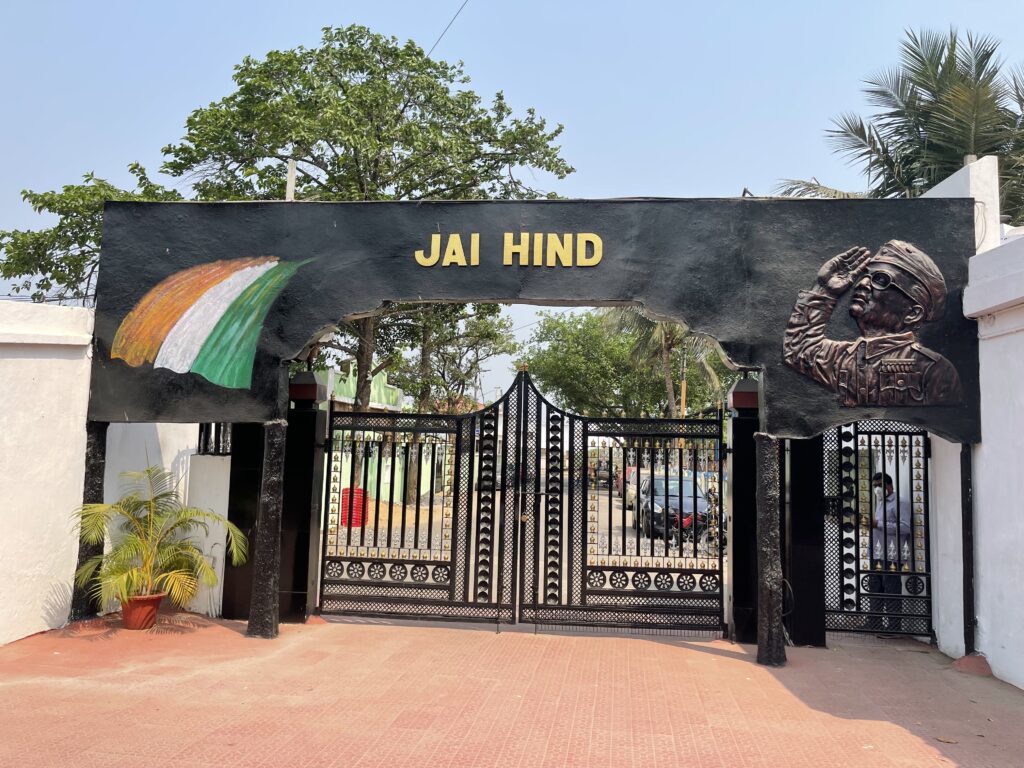
A Visit to Cuttack: Exploring the Legacy of Subhas Chandra Bose
During our journey through Odisha, we made sure to visit Cuttack, the birthplace of one of India’s most influential leaders and freedom fighters, Subhas Chandra Bose. Known for his courage, leadership, and unwavering dedication to the independence movement, Netaji Subhas Chandra Bose remains an iconic figure in Indian history.
In Cuttack, we visited the Netaji Birthplace Museum, a place that not only honors his life but also sheds light on his personal journey, his political beliefs, and his tireless efforts for India’s freedom. The museum is located in the house where Netaji was born, and it is filled with memorabilia, photographs, documents, and artifacts that chronicle his early life, his rise in the Indian National Congress, his fight for independence, and his global outreach during World War II.
What stood out during our visit was the vast collection of rare photographs and personal items that gave us an intimate look into his life. The museum also delves into the mystery surrounding his final days, a topic that still fascinates and intrigues many.
We were deeply moved by the exhibits that displayed his commitment to India’s independence, his leadership of the Indian National Army (INA), and his famous slogan “Give me blood, and I shall give you freedom!” His story serves as a powerful reminder of the sacrifices made by countless individuals in the fight for India’s freedom.
Key Highlights of the Netaji Birthplace Museum:
-
Netaji’s Early Life: The museum showcases the early years of Subhas Chandra Bose, his education, and his early political involvement.
-
Political Career: There are numerous exhibits dedicated to his political activities, his role in the Indian National Congress, and his association with other prominent freedom fighters.
-
INA and World War II: The museum also features items related to his leadership of the Indian National Army (INA) and his efforts to gain international support for India’s freedom struggle.
-
Personal Artifacts: Photographs, letters, and personal belongings offer a glimpse into the personal life of this great leader.
-
Historical Significance: The museum also discusses the various theories surrounding his mysterious disappearance in 1945.
Visiting the Netaji Birthplace Museum in Cuttack was an incredibly insightful and emotional experience. It allowed us to connect with the history of Subhas Chandra Bose in a more personal way, understanding his struggles, sacrifices, and his enduring legacy in India’s fight for independence.
Places to Visit near Bhubaneswar
- Lingaraj Temple
- Mukteshwar Temple
- Kedar-Gauri Temple
- Rajarani Temple
- Udaygiri and Khandagiri Caves
- Dhauli Peace Pagoda
- Ashokan Rock Pillars
- Puri Jagannath Temple
- Puri Marine Drive Beach
- Konark Sun Temple
- Chandrabhaga Beach
- Netaji Birthplace Museum
- Cuttack Chandi Temple
- Chilika Lake
It was a 2900 KM + road trip from Chennai – Bhuvneshwar – Puri – Konark – Bhuvneshwar – Cuttack – Chennai and it gave us countless memories.
How to Reach Bhuvneshwar?
You can reach Bhuvneshwar from any type of travel mode:
- By Flight/Air: You can take a flight from any major city to Odisha’s capital Bhuvneshwar’s Biju Patnaik International Airport. You can then visit Puri which is just 60 Km from the airport and 35 Km more to visit Konark Sun Temple.
- By Road: Buvneshwar is connected with good road connectivity. You can take bus services from nearby major cities and by car from any part of India. We love to do road trips and travel mostly by road.
- By Train: You can take the most convenient mode of travel i.e Train. The nearest train station is Bhuvneshwar and from here you can take an auto or taxi to reach your accommodation. There are many trains which directly goes to Puri.
Check out my youtube channel for travel vlogs and subscribe if you like them.
